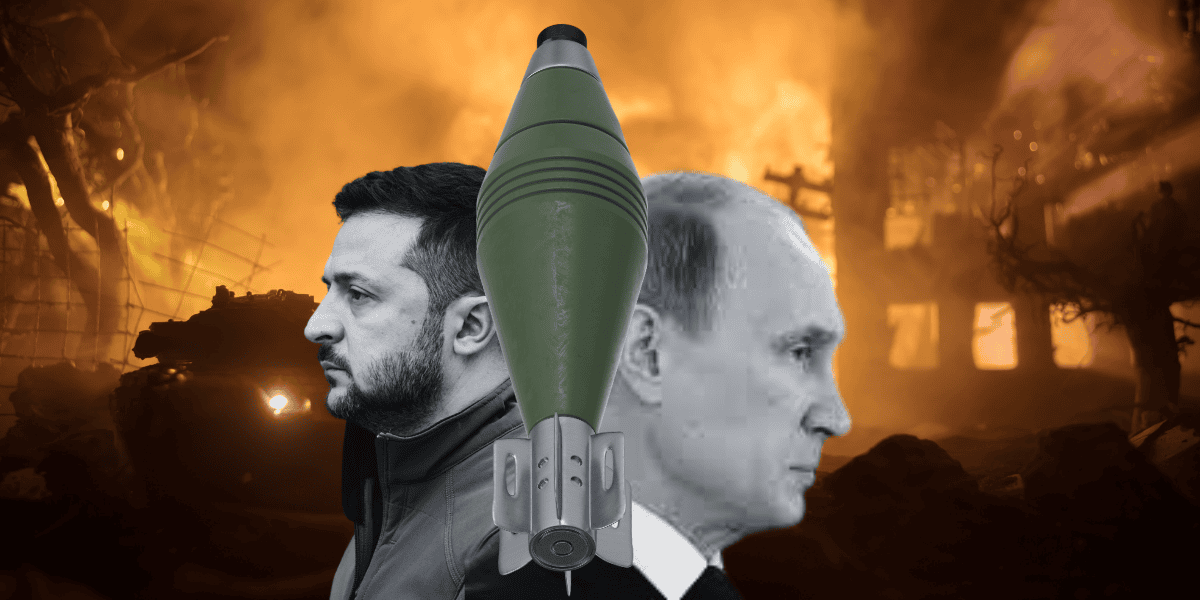A series of Ukrainian drone strikes has delivered some of the most significant blows yet to Russia’s oil infrastructure, crippling major refineries and creating ripples across the country’s fuel market.
The campaign is hitting deep into Russian territory, far from the front lines, and it is unfolding just as demand for fuel is peaking in the summer months.
The most recent hit came on Sunday, when the Saratov refinery in the Volga region was forced to stop taking in crude after a strike. Operated by state-owned Rosneft, the facility has the capacity to process around 140,000 barrels of crude a day. A prolonged shutdown could send shockwaves through the domestic gasoline market, where consumption is already rising with the season.
Saratov is now the third Rosneft refinery to be taken offline or disrupted within a week. This wave of strikes also reached into 13 Russian regions and Crimea, underscoring Ukraine’s ability to reach targets far from the battlefield.
A Week Of Major Disruptions
The latest outages follow a damaging round of strikes on August 2. On that day, Rosneft’s largest refinery, Ryazan, with an annual capacity of 13.8 million tons, had to shut down about half its operations after an attack damaged two of its three primary crude distillation units. Ryazan supplies fuel to the Moscow region, making its partial closure both an economic and political headache for the Kremlin.
The same day, the Novokuibyshevsk refinery in Samara, considered the most advanced in Rosneft’s regional network, was taken completely offline. The strike damaged the atmospheric column of its AVT-11 unit, which could handle 18,900 tons of oil per day. Although a smaller AVT-9 unit capable of processing 4,700 tons daily was intact, production was halted altogether.
Industry sources say repairs at both Ryazan and Novokuibyshevsk could take about a month.
Ukraine’s strikes are not confined to Rosneft assets. On August 7, drones hit the Afipsky refinery in Krasnodar, a facility that processes 6.25 million tons annually, i.e, over 2% of Russia’s refining capacity, and a known supplier of fuel to the Russian military. And on Sunday, nearly 2,000 kilometers from the Ukrainian border, Lukoil’s Ukhta refinery in the Komi Republic was also targeted.
Why Ukraine is Targeting Oil Refineries?
The strikes are part of a deliberate effort to dismantle Russia’s refining backbone. By forcing multiple plants offline at the same time, Ukraine not only disrupts domestic fuel supplies but also strains Russia’s logistics, complicates military fuel procurement, and forces Moscow to divert resources to repairs instead of the war effort.
If facilities like Ryazan, Novokuibyshevsk, Saratov, and Afipsky remain offline through the summer, Russia could face a triple blow: disrupted supply lines to the military, rising domestic fuel prices, and a drop in export volumes. All of this would further squeeze an economy already under wartime strain.
There is also a tactical element to the timing. Russian refineries generally run near capacity to meet domestic needs and fulfill export quotas. Damaging several critical distillation units at once means supply pressure builds quickly. Even if Moscow shifts fuel from other regions, long-distance transport adds costs, causes delays, and leaves shipments vulnerable to more strikes.

A Steady Campaign With Growing Impact
Ukraine has kept up a consistent tempo of drone strikes on Russian oil infrastructure, from refineries and pumping stations to export terminals. This has begun to alter the flow of Russian energy exports.
After two major refineries reduced operations because of Ukrainian strikes, Moscow decided to increase crude exports from its western ports to nearly two million barrels a day in August — about 200,000 barrels more than earlier forecasts. The shift reflects the fact that crude that cannot be processed domestically is now being sent abroad instead.
Where Is Russian Oil Going?
Before the full-scale invasion, the European Union was Russia’s biggest oil customer. That changed after EU sanctions, which forced Moscow to pivot toward Asian buyers. Today, China, India, and Turkey are the top markets for Russian crude.
China leads, importing roughly 219.5 billion dollars’ worth of Russian energy. India follows at 133.4 billion, and Turkey at about 90.3 billion.
While most European countries have sharply cut imports, a few exceptions remain. Hungary still takes small volumes through pipelines, and outside Europe, countries like Brazil continue to make limited purchases.
Despite Western sanctions, oil remains highly profitable for Moscow. The Kyiv School of Economics estimates that Russia earned about 12.6 billion dollars from oil sales in June alone. Over the whole of 2025, exports could generate as much as 153 billion dollars.
The Strategic Goals Behind the Strikes
BBC estimates suggest Ukraine carried out at least 81 attacks on Russian refineries and fuel depots in 2024. That pace has increased in 2025, with Kyiv now hitting targets deeper inside Russian territory on a regular basis.
Retaliation For Civilian Attacks
Ukraine’s military frames these operations as a response to Russian strikes on civilian areas. The August 2 attacks on Ryazan and Novokuibyshevsk were described by the General Staff as retaliation for what it called Russian “terrorist” attacks on Ukrainian cities that caused civilian deaths.
Cutting Military Fuel Supplies
Refineries supply the diesel, jet fuel, and gasoline that power Russia’s tanks, aircraft, and transport vehicles. By damaging these facilities, Ukraine directly affects the military’s operational capacity. Every refinery taken offline reduces the fuel flowing to occupied Ukrainian territory, where it powers Russian armor and aircraft.
Weakening The War Economy
Russia’s energy exports are a financial lifeline. The revenue funds military procurement and sustains wartime spending. Hitting refineries attacks both the source of fuel for the military and the cash flow that supports the war effort. Some analysts call these strikes “kinetic sanctions,” a physical counterpart to economic measures that have so far failed to fully choke Russia’s oil income.
Fuel Shortages & Price Surges
The August 2 strikes had immediate economic consequences. Ryazan and Novokuibyshevsk, which supply fuel to central Russia, Moscow, the south, and occupied areas, were knocked offline. Rosneft said crude intake would fall by about 60 percent in August.
Gasoline prices reacted instantly, and premium AI-95 reached record highs of over 77,000 rubles per ton. Repair timelines range from one to six months, meaning shortages and high prices could persist well into the year.
Demonstrating Strategic Reach
By hitting facilities as far away as the Komi Republic, Ukraine is sending a clear message that no part of Russia’s energy infrastructure is out of reach. This complicates Russian defensive planning, forces the diversion of resources to protect infrastructure, and signals to Moscow that Ukraine can impose costs far from the battlefield.
The International Dimension
The refinery strikes are also playing out against a backdrop of intensified diplomacy. Western leaders, including US President Donald Trump, have been increasing pressure on Moscow to negotiate. Every successful Ukrainian strike reinforces this pressure by proving Kyiv still has the capacity to damage critical Russian assets.
According to a Bloomberg report on August 8, citing unnamed sources, the United States and Russia are exploring a potential agreement to end the war. The talks reportedly include a proposal to formalize Russia’s control over territory it has seized since the invasion began.
A Campaign With Multiple Effects
Taken together, the refinery attacks are creating problems for Russia on several fronts. They are forcing expensive repairs, disrupting domestic fuel supply, reducing refined product exports, and cutting into military fuel reserves. The strikes also carry psychological weight, signaling to Russian citizens and the political elite that the war is affecting the country’s core economic assets.
For Ukraine, the campaign offers both tactical and strategic benefits. It disrupts the logistics chain feeding Russia’s war effort, drains the Kremlin’s resources, and strengthens Kyiv’s position in any future negotiations.
If this tempo continues through the rest of the summer, Moscow could find itself managing fuel shortages, higher prices, and reduced export earnings while trying to keep its military supplied on the battlefield.
- Shubhangi Palve is a defense and aerospace journalist. Before joining the EurAsian Times, she worked for ET Prime. She has over 15 years of extensive experience in the media industry, spanning print, electronic, and online domains.
- Contact the author at shubhapalve (at) gmail.com



